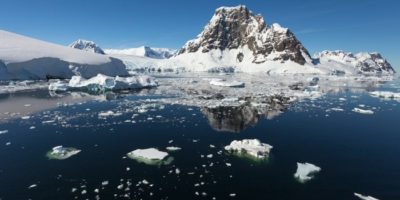Disclaimer: The views, suggestions, and opinions expressed here are the sole responsibility of the experts. No Pacific Daily journalist was involved in the writing and production of this article.
Expanded Antarctic ocean ice may have added to past ice ages

Topsy turvy “rivers” of warm sea water might be one of the reasons for Antarctica’s ice racks separating, prompting an ascent in ocean levels. Another study recommends that, before, increments in Antarctic ocean ice in colder atmospheres may have added to ice ages.
Utilizing PC recreations, the exploration took a gander at past changes during the chilly time frames and noticed that past increments in ocean ice levels may have fundamentally modified the course of the sea, which prompted an invert nursery impact as carbon dioxide levels in the sea expanded and levels noticeable all around diminished.
“One key question in the field is still what caused the Earth to periodically cycle in and out of ice ages,” University of Chicago professor and the study’s co-author, Malte Jansen, said in a statement. “We are pretty confident that the carbon balance between the atmosphere and ocean must have changed, but we don’t quite know how or why.”
The last significant ice age finished toward the finish of the Pleistocene age, around 11,700 years back, as ice sheets have occasionally developed and afterward gotten littler. Scientists accept that changes to the Earth’s circle might be mostly answerable for a portion of the Earth’s cooling, yet extra factors have likely had an influence, Jensen included.
“The most plausible explanation is that there was some change in how carbon was divided between the atmosphere and the ocean,” Jansen continued. “There’s no shortage of ideas about how this happens, but it’s not quite clear how they all fit together.”
Specialists additionally accept a small ice age may have happened about 12,800 years back. It likely originates from a space rock sway that “rocked the Northern Hemisphere” and prompted the Younger Dryas atmosphere occasion.
“What this suggests is that it’s a feedback loop,” said the study’s lead author, Alice Marzocchi. “As the temperature drops, less carbon is released into the atmosphere, which triggers more cooling.”
“What surprised me is how much of this increased storage can be attributed to physical changes alone, with Antarctic sea-ice cover being the key player,” Marzocchi added, noting that future study of the ocean and the role it plays in the carbon cycle can help simulate “future environmental change.”
The examination has been distributed in the logical diary Nature Geoscience.
Doug Hendriks is the genius author. His writings have influenced many, he is a distinguished writer in the city of New York. He has also created three influential websites and his ability to generate creative ideas for marketing skills is commendable. Now he works in content marketing department .
Related News

THE KETO DIET MEAL PLAN HAS MET ITS MATCH
Spread the loveWeight loss is made to seem easy since all it requires is exerciseRead More

Study reveals new insight into the role of ocean ice in controlling climatic carbon levels
Spread the loveAnother study has featured the urgent job that ocean ice over the SouthernRead More